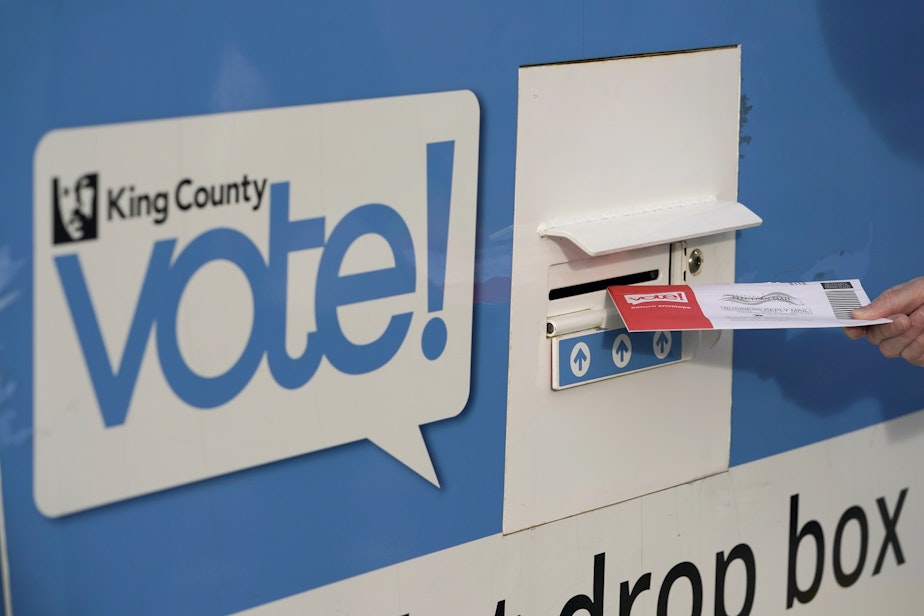Already?! Washington state’s presidential primary is here

Ballots are arriving in Washington state voter mailboxes this week for the March 12 presidential primary. The contest will decide who represents Democrats and Republicans in November's general election.
Stuart Holmes is Washington state’s director of elections. He told KUOW’s Rob Wood how the primary works.
This interview has been edited for clarity.
Rob Wood: It's a pretty simple ballot, but it still raises some questions. When voters open their ballots, what can they expect?
Stuart Holmes: Voters are likely going to see some names, as you mentioned, that have withdrawn from the race. The ballot gets created weeks and weeks ahead of time. We get a list from the parties 60 days before the election.
The difference in a presidential primary is they'll also need to attest to a party declaration. Voters will observe that there's a specific party declaration in a box that they will check on one of those party declarations to attest that they will participate in only that party's nomination process.
Why is that?
Sponsored
It’s the way the state law is created. Funny enough, it was created through an initiative by the citizens to the Legislature in 1989. So, a long time ago, but that's the way that the state law is written. You can only participate in one of the political party’s nominations in the state of Washington.
Can I vote for someone who's dropped out, or write in a candidate?
You absolutely can. You can vote for candidates that are dropped out, the uncommitted option (on the Democrat's side of the ballot,) or right somebody in.
Why are there only two parties in our primary? Where are the other parties?
This is a major party primary. To qualify, you have to get a certain percentage of the votes cast in the general election. We'll look at the results this fall and see if any other parties qualify as a major party. Four years ago, it was really close. We almost had a new major political party representative in the state of Washington. So this fall, we may see more.
Sponsored
I understand my choice becomes a public record for 60 days. Why is that?
It's not your choice for the candidate that's listed, but your party declaration will be made available to the public for a short period after the election. We provide that list to the political parties. There are rules that you can only participate in that political party's nomination process. So this gives them the ability to confirm that people haven't participated in one and then are switching to another. But it's a public election process, so we want to be transparent in that way. After 60 days, it's wiped clean, and it's not a part of the system anymore.
When all the ballots are counted, what happens then? What's the outcome for the parties and the candidates?
The parties will use results from the presidential primary for their delegate allocation. That’s going to be based on the party rules. But once the election is certified by the Secretary of State's office in the weeks after election day, we will provide the parties with the results of the election and then they will, according to their party rules, allocate their delegates according to the results.
If you didn't get a ballot for some reason, what should you do?
Sponsored
If you're looking for your ballot, go to voter.votewa.gov. You can log in and see when your ballot was sent to you. If you don't get it, right alongside that you'll have your county contact information. You can reach out to your local election official to get a replacement ballot sent to you.
When do voters need to get their ballots in?
Election Day is March 12. You'll want to get that in the mail to your county auditor's office no later than March 12. Get that thing postmarked by March 12. If you're going to drop it in an official drop box, they all close at 8 p.m. on Election Day.
Listen to the interview by clicking the play button above.





